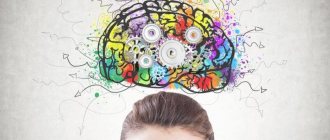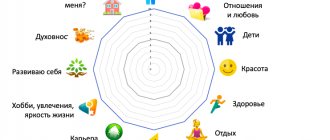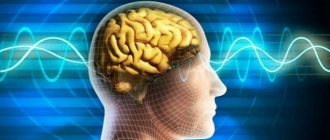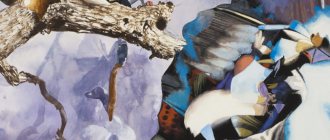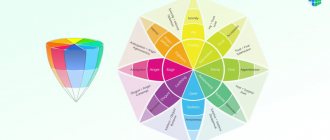As long as humanity has existed, it has been concerned with the question of emotions - what kind of phenomenon they are, why they arise and why they are so difficult to control, what meaning is contained in them and how many of them exist. Many fiction books are devoted to emotions, feelings and experiences of the soul, or touch on this topic in one way or another, and no less number of academic articles and studies have been written about them. At the moment, there are about a hundred scientific definitions of emotions, dozens of classifications and a number of theories regarding this vital phenomenon.
In this article we want to consider the adaptation model of emotions, which was developed by the American psychologist Robert Plutchik. Plutchik devoted many decades to research into the nature of emotions, as well as their evolutionary prerequisites and mechanisms, features and causes of defensive mental reactions, as well as psychodiagnostic details of human types. The fruit of all these scientific researches was the adaptation (or psychoevolutionary) model of emotions and the so-called Wheel of Emotions, which we will consider.
Let's understand the evolutionary background of our emotions better and get acquainted with Plutchik's model in detail.
Psychoevolutionary model of emotions
Plutchik's theory is based on an understanding of emotions as evolutionary mechanisms designed to ensure the best adaptation to external conditions and effective survival. In this paradigm, each emotion plays its role as a stimulator of adaptive behavior, and behind each emotion there is a natural impulse that must find its expression. These mechanisms are genetically determined and work automatically, moving us and helping us respond to external circumstances.
Thus, there are 8 primary, basic (or prototype) emotions:
- anger;
- fear;
- sadness;
- joy;
- disgust;
- astonishment;
- anticipation (also called expectation, and this is a joyful expectation);
- confidence.
At the same time, all of them can be combined into pairs of opposites (bipolar pairs): anger - fear, sadness - joy, disgust - surprise, anticipation (expectation) - trust.
Plutchik notes that all these emotions are observed in animals for the same evolutionary reasons. That is, the fact that emotions are inherent not only to homo sapiens, but also to other biological species, confirms that they have a deep vital meaning. Basic emotions and incentives drive animals, just like us, pushing them towards the most appropriate behavior in terms of adaptation to life.
To better understand what exactly the role of each of the basic emotions is, let's look at them in more detail. Plutchik decomposed the possible phenomena involved in the development of basic emotions into unique chains. In them, an external phenomenon (stimulus) entails a certain perception, a conclusion about it (cognition). This involves a certain experience (the emotion itself) that entails corresponding behavior. And all this is crowned by the effect or goal pursued by the individual in this psychoadaptive model. Plutchik presented all the elements of this system in the form of a table in his book Theories of Emotions, published in 1980. From it we see that:
- Fear (horror) is characteristic of a situation of threat (signal: “Danger!”), and its meaning lies in self-preservation.
- The emotion of anger (anger, rage) is a response to an obstacle (“Enemy”), and has the goal of destroying and eliminating this obstacle.
- Joy (ecstasy) arises at the sight of a potential partner, and generates desire for the purpose of reproduction.
- The loss of a significant individual causes sadness , grief, signaling abandonment, and encourages people to reintegrate (reunite with people, society).
- Acceptance and trust are characteristic of situations where we meet a member of our group, “our own” (recognizing him as a “friend”), and strive for accession, a closer connection with him.
- If we encounter a disgusting object, the natural reaction will be rejection and the emotion of disgust (hatred). The purpose of this process is to reject, reject that which can harm, poison or kill.
- Anticipation (joyful anticipation) is characteristic of situations where we are faced with something new, unknown to us, new territory. We are driven by interest and the desire to explore terra incognita: “What’s there?” Therefore, our subsequent actions come from the message to explore.
- And finally, surprise is a response to some new, unexpected or unknown object (“What is this?”) In such a situation, we are driven by the goal of determining our place relative to this object, finding guidelines and understanding the situation so as to know that we are safe regarding this object and can be calm.
Thus, it turns out that the main role of emotions is adaptive. They have evolved in both animals and humans to help them best cope with situations that arise. Depending on what the situation is and what its significance is for the individual, emotion allows one to act on the appropriate impulse, preserving the integrity of the body and well-being.
Here we can draw an interesting analogy with another point of view on the basic emotions inherent in all people. Let's take a closer look at it.
I like to move it, move it
If the character’s face in the frame is not a close-up, then the body should take on the role of “expressor of emotions”. It will convey them through postures and active movements.
For example, in The Simpsons, characters often express joy through dancing while their facial expressions remain static. The same technique is used in Gravity Falls:
To convey feelings through movement, you need to think about how they manifest in the body. From fear or cold, the skin turns goosebumps, from excitement sweat appears on the forehead, and from anger the fingers clench into fists. Sagging shoulders express sadness and fatigue, a surge of confidence straightens your posture - and so on.
Animation icon Hayao Miyazaki conveyed emotions through subtle movements that added up to the overall picture. For example, in the anime “Ponyo the Fish on the Cliff,” he left the main character barefoot. When she was happy, her emotions were expressed through jumping and splaying her toes.
Basic emotions according to Ekman and how to recognize them
The seven emotions described by Paul Ekman are also called basic or fundamental emotions. This American psychologist and researcher gained great fame thanks to his work, in which he showed that facial expressions of various emotions are universal for all people, regardless of their cultural, racial and other affiliation. Published in 1978, the Facial Action Coding System (FACS) clearly and comprehensively demonstrates what micro-movements and facial expressions look like and offers a unique code for reading emotions.
The 7 universal emotions described by Ekman include:
- astonishment;
- fear;
- disgust;
- anger;
- joy;
- sadness;
- contempt.
Each of the 7 universal emotions is distinguished by its own specific micro-movements and micro-expressions of facial expressions, by which it is possible to accurately recognize it. You can study this aspect in detail in the article “Microexpressions,” but it is better to understand the entire system by reading Paul Ekman’s books “The Psychology of Emotions” and “The Psychology of Lies.”
We also draw your attention to the fact that for those who want to go even further in the ability to understand and “read” people, there is an online profiling training program. It is designed to teach you to get to know a person better, including leaving a psychological portrait and understanding real emotions, recognizing true and false ones. In addition, the program teaches skills to detect lies, stop manipulation and influence people. But let's continue.
As we can easily notice, the above emotions practically coincide with all the basic emotions identified by Plutchik. The exceptions are joyful anticipation (anticipation, interest) and trust, which are present in Plutchik’s system but absent in Ekman, and contempt. However, this fact does not devalue either theory.
Thus, Robert Plutchik's theory of emotions largely overlaps with other theories of basic emotions, in particular with the system of basic emotions, the facial microexpressions of which are clearly described in the works of Paul Ekman.
Mouth
The lips are surrounded by many muscle groups, so just bending them can add a new dimension to a character's facial expression. With their help it is easy to express joy and delight (left) or anger and disgust (right):
Diagram of mouth facial expressions. Image: clipstudio.net
In addition, the mouth can move asymmetrically - and this adds even more shades. For example, a smile from one corner of the mouth will be more restrained than a smile from both sides.
The Wheel of Emotions by Robert Plutchik
The Wheel of Emotions, created by Plutchik in 1980, represents emotions as a flower with eight petals. Each “petal” symbolizes one of the prototypical emotions, with opposing emotions located opposite each other. It turns out that polar emotions oppose and balance each other:
There can be a huge variety of different emotions and feelings, but they are all either basic emotions or their mixtures and derivatives. Thus, the eight emotions located outside the wheel, in the space between the petals, are a combination of the emotions of adjacent petals.
The wheel of emotions is made in color, which makes a lot of sense. Each emotion has its own color, and its saturation reflects the intensity of the experience, the brightness of the emotion. It turns out that in the very heart of the diagram there are the most vivid, intense emotions, in the second row (the second segment of the petals) the actual main (or basic) emotions, and then - a less pronounced version of each emotion.
It is worth noting that Plutchik himself did not call his graphic scheme a flower and did not use the term “petals.” In his works, he presented a model of a wheel and a model of a cone, which form one whole. If the Wheel of Emotions is an expanded two-dimensional diagram, then the cone is the same model, but in a collapsed three-dimensional form. The original graphical model clearly demonstrating both patterns and their relationship can be found in Plutchik's 2001 article [The Nature of Emotions, 2001]
To summarize: the main 8 emotions and their different degrees of intensity can be represented in the form of a circle, flower or wheel. This diagram, called the Wheel of Emotions, reflects both the intensity of each emotion through a color code and demonstrates the relationship of polarity or opposition of emotions. In addition to the basic emotions themselves, she indicates 8 derivatives formed by mixing two prototypical emotional states.
Nose
When animating the nose, it is important to remember that it moves in sync with the lips. To animate the nose, the artist works with the tip (pulling it up, down and to the sides) and the nostrils (narrowing and widening them).
To express disgust, the tip of the nose should be raised and the bridge of the nose slightly wrinkled (2 and 3), and for the emotion of anger you need to draw the character's nostrils flared (4):
Nasal facial expression diagram. Image: clipstudio.net
Assessment of the situation
To assess situations from an emotional point of view, only 5 criteria are enough.
- Who do we evaluate —ourselves or others?
- Time - was (possessed in the past, but lost; did in the past); happening (have now, do); will happen (get it, do it, or lose it); At the same time, there are, so to speak, “timeless” emotions.
- Gain/loss/violation - I received something, achieved a goal, or, conversely, lost something; someone violated rules or values.
- Fairness/correctness - how (un)fairly the right obtained is or how (un)acceptable the behavior is.
- Accuracy, probability - how great the probability is.
As a result, we get options for the meanings of emotions (for example, for you it may be something different):
- excitement - there is a possibility of winning;
- guilt – I did something wrong – I violated important values;
- delight - received much more than I expected;
- admiration - a person has done something very important and good;
- anger - my important values were undeservedly violated;
- pride - I have fairly/deservedly achieved something important;
- grief - the loss of something very important;
- sadness - my needs are not met;
- anger - someone (unfairly) violates my important values or principles;
- fear – (possible) problem in the future;
- happiness – my important values are fairly satisfied;
- anxiety – a possible (usually uncertain) danger in the future;
- surprise - a reaction to surprise;
- horror is a very big problem in the future;
- euphoria – my important values are satisfied much more than expected.
Almost all emotions can be divided into “clusters” based on these 5 criteria, and for each cluster there will be a set of common characteristics. But the differences within the “cluster” will be related to intensity: how strongly the values are violated, how important is what you gained or lost, how fair or unfair it is from your point of view, how likely the event is. And, for example, fear differs from apprehension in the degree of danger (possible loss), and fear from anxiety differs in the level of accuracy (with fear the source of danger is known, but with anxiety it is not).
Facial animation programs
Facial animation software is a good helper for illustrators. There you can model a specific emotion or sound that the character should make. You can upload your own video into such programs and “copy” body language from it:
Adobe Character Animator is a program from the Creative Cloud family. She animates not only the face, but also the movements. The character can walk, point at something, hold objects, the main thing is to set the parameters.
Cartoon animation 4 is a professional 2D character animation tool that also supports facial motion capture for real-time facial animation. You can use it with any webcam, as well as an iPhone X or higher, but you'll need to install the Live Face app.
CrazyTalk 8 is a simple program that creates talking animations with 3D and 2D characters. Pre-recorded audio or even text is loaded into it, and then the program animates the character's face to match that speech. For text files, you can customize stress, intonation, duration of individual sounds and the file itself.


